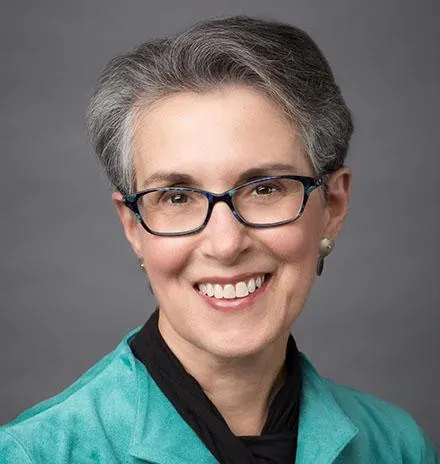
The following is an excerpt that was adapted and lightly edited from the Introduction of Retiring: Creating a Life That Works for You, written by Teresa M. Amabile, Lotte Bailyn, Marcy Crary, Douglas T. Hall, and Kathy E. Kram and published on October 2, 2024.
I would say, although I didn't have a clear idea of what it [retirement] would look like, it's not anything like I would have imagined. – Donna, six years post-retirement.*
In the final years of her career, Donna relished the thought of retirement. More planful than most people, she began working with a life coach three years before she retired—to help her make the retirement decision and figure out what to do with the rest of her life. The coach did, indeed, help her decide when to retire. After Donna’s company offered a transition-to-retirement program, she took advantage of that program, signing an agreement to retire in 18 months, a period during which she would enjoy full benefits, a reduced workweek, and a relatively generous salary. When Donna finally retired, at age 68, she had a clear plan. She would work a few hours a week at a new solo consulting business she was setting up and, until her husband retired, spend her weekdays doing whatever else she felt like doing. Slightly anxious about the uncertainty of successfully implementing this plan, she was nonetheless excited.
In this book, we will explore the experiences of Donna, and many other company-employed professionals, throughout their retirement journeys.
And yet, six years after retiring, she said that retirement was “not anything like I would have imagined.” In this book, we will explore the experiences of Donna, and many other company-employed professionals, throughout their retirement journeys. We will look into the choices they made about how to live their lives, the circumstances surrounding them, the unexpected events that life put in their paths, their joys and sorrows along the way, and how satisfied they felt, in the end. Although retirement life, six years in, was quite different from Donna’s pre-retirement vision, she was not unhappy. In fact, she rated herself as “very satisfied” with her life as a whole.
Our aims, with this book, are to help you answer questions about retiring for yourself, offer you fresh insights into the retirement journey, spark ideas on how to approach it in a way that works for you and, ultimately, help you—like Donna—achieve a sense of satisfaction in your own retirement life. We’ll do this by sharing findings from research we’ve done over the past ten years, research in which we interviewed 120 people individually, in depth, about their thoughts, feelings, and experiences concerning retirement. Because our deepest insights arose from the interviews of the 14 people who, like Donna, agreed to speak with us at multiple points along their retirement journey, we will feature their stories prominently. As you will see, we discovered both great variety and some clear common themes in those stories.
One overarching theme can best be expressed as a metaphor: Retiring is crossing a bridge from a land where work was a dominant feature of the landscape to a land without work—or with work appearing in a vastly diminished or vastly different form. Many interviewees said it felt as if they were crossing over to a new phase or stage of life, a new chapter, an unexplored territory. Life during the career years was on one side of the bridge, the new retirement life was on the other side, and the bridge was that uncertain life in the middle, the transition itself, the time and place where things get figured out. For some people, the land on the far side of the bridge is a lot like the land on the other side; their lives aren’t much different, post-career, from before—save for the absence of their career work. For other people, the crossing is almost like traveling to a new planet, a place where everything seems different. And, of course, there may be other bridges ahead, other crossings to ever newer lands.
We invite you to consider your own thoughts about and attitudes toward retirement, how you acquired them, and how they might be affecting your willingness, now, to engage in serious reflection on retirement.
Not everyone feels the same about retirement. In fact, for some, the prospect of retiring is more like leaping off a cliff than crossing a bridge—a decidedly negative, resistant attitude.
We invite you to consider your own thoughts about and attitudes toward retirement, how you acquired them, and how they might be affecting your willingness, now, to engage in serious reflection on retirement. Do you view retirement as a time of freedom and personal growth, perhaps because you have close friends or relatives who have thrived in retirement? Do you shrink from it, worried about maintaining your health and financial security during that life stage because you’ve read so many scary articles about those topics? Or maybe you haven’t really thought about it much at all, viewing retirement as something on the distant horizon of life.
Do think about it. That’s our urging to you, as you read this book. Rather than passively taking in what’s written in these pages, actively engage in thinking about your own retirement and the retirements of people closest to you. If you’re a manager or counselor, or even the spouse or adult child of someone approaching retirement, think about how you can use this information to help people leave their careers feeling good about and prepared for wrapping up their work and moving toward their new lives on the other side of that bridge.
*All names and other identifying information about research participants, their companies, and other people in their stories, have been disguised throughout this book. Words within [brackets] have been inserted to provide context and improve comprehensibility.
Reproduced from Retiring: Creating a Life That Works for You (2024) by Teresa M. Amabile, Lotte Bailyn, Marcy Crary, Douglas T. Hall, and Kathy E. Kram with permission from Routledge. Details of the full book are available at Retiring: Creating a Life That Works for You - 1st Edition - Teresa M. Amabile et al. (routledge.com).
You Might Also Like:
Feedback or ideas to share? Email the Working Knowledge team at hbswk@hbs.edu.
Image credit: HBSWK with assets generated with Midjourney, an artificial intelligence tool, and from AdobeStock/icemanphotos

